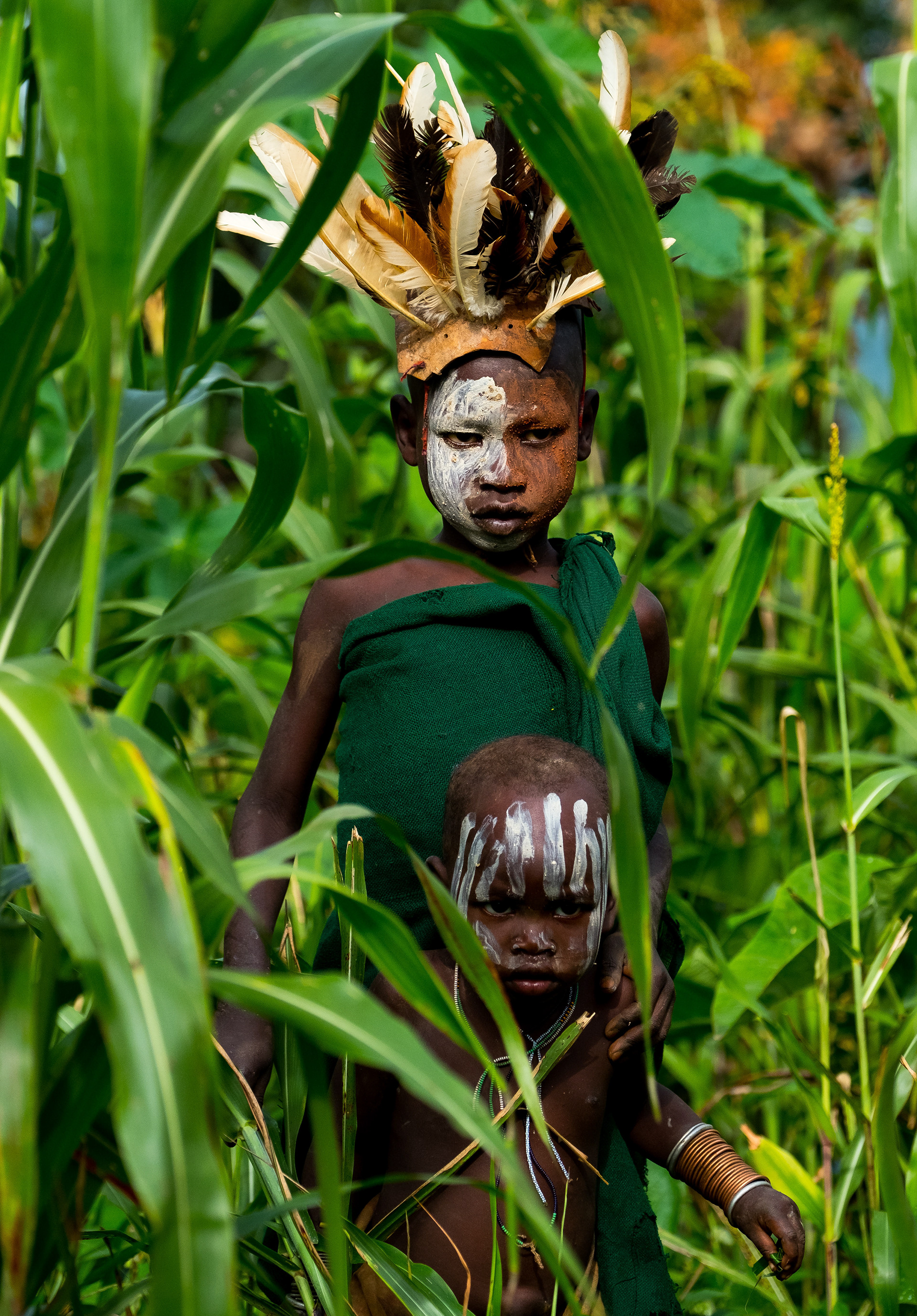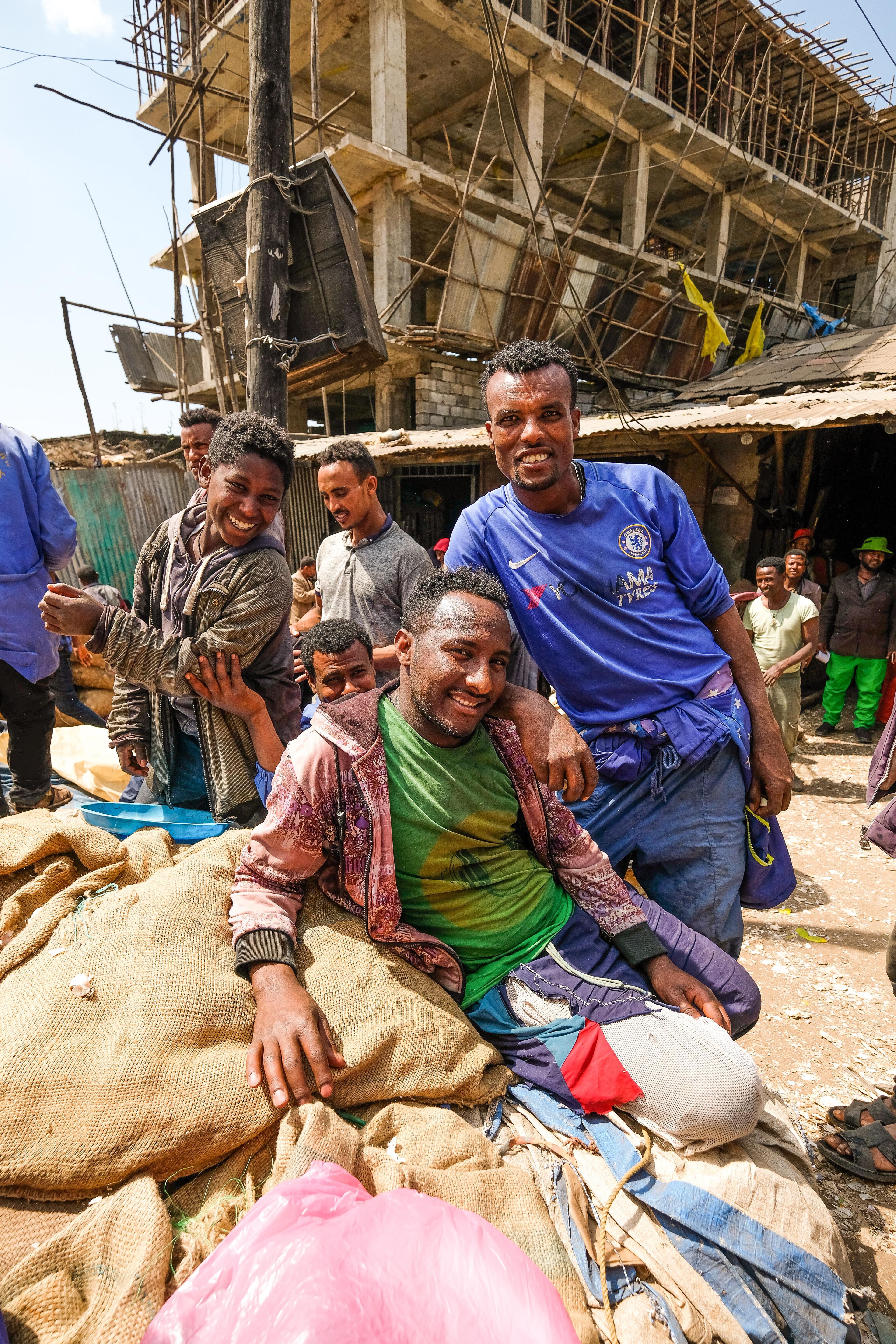


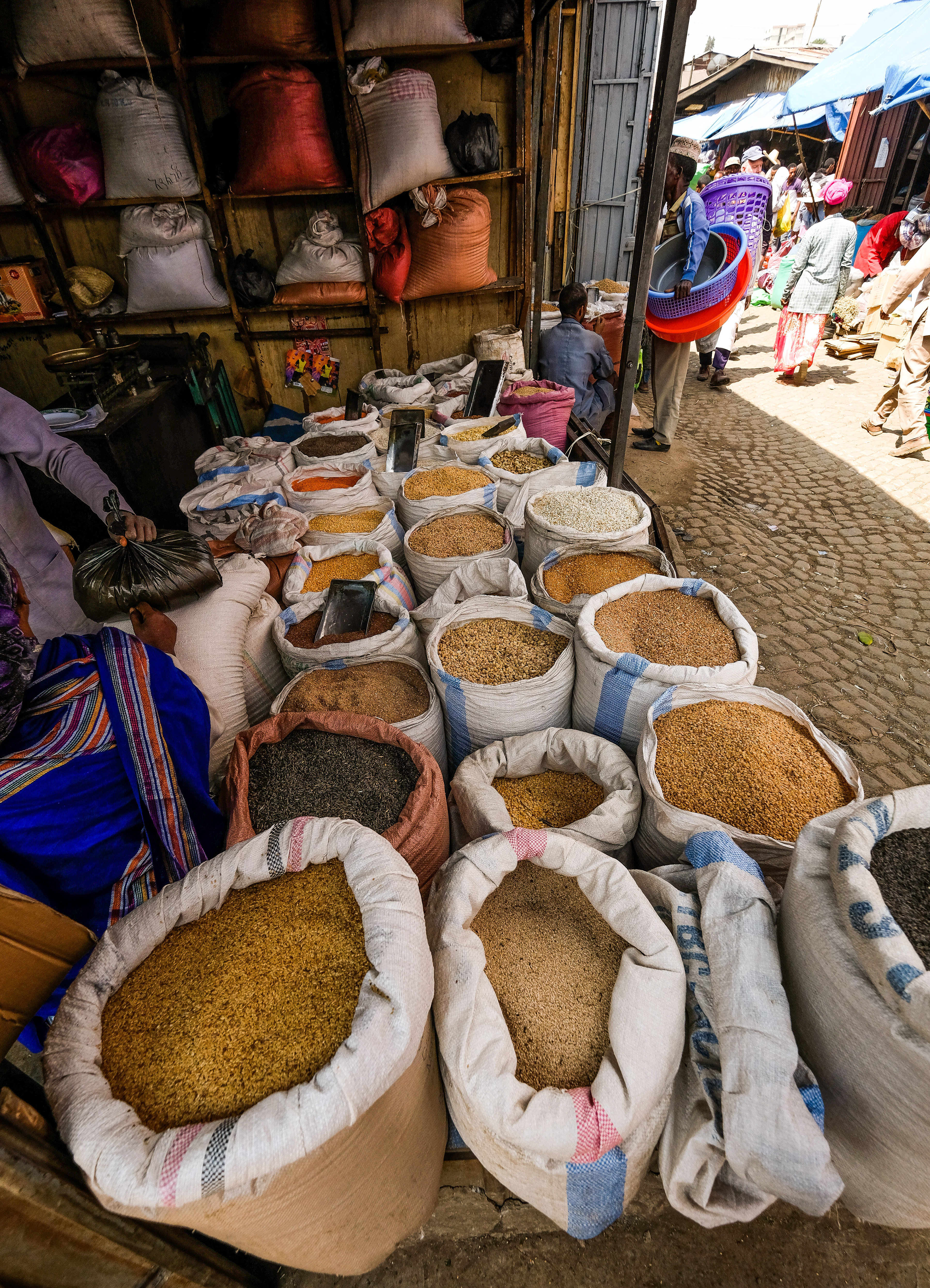
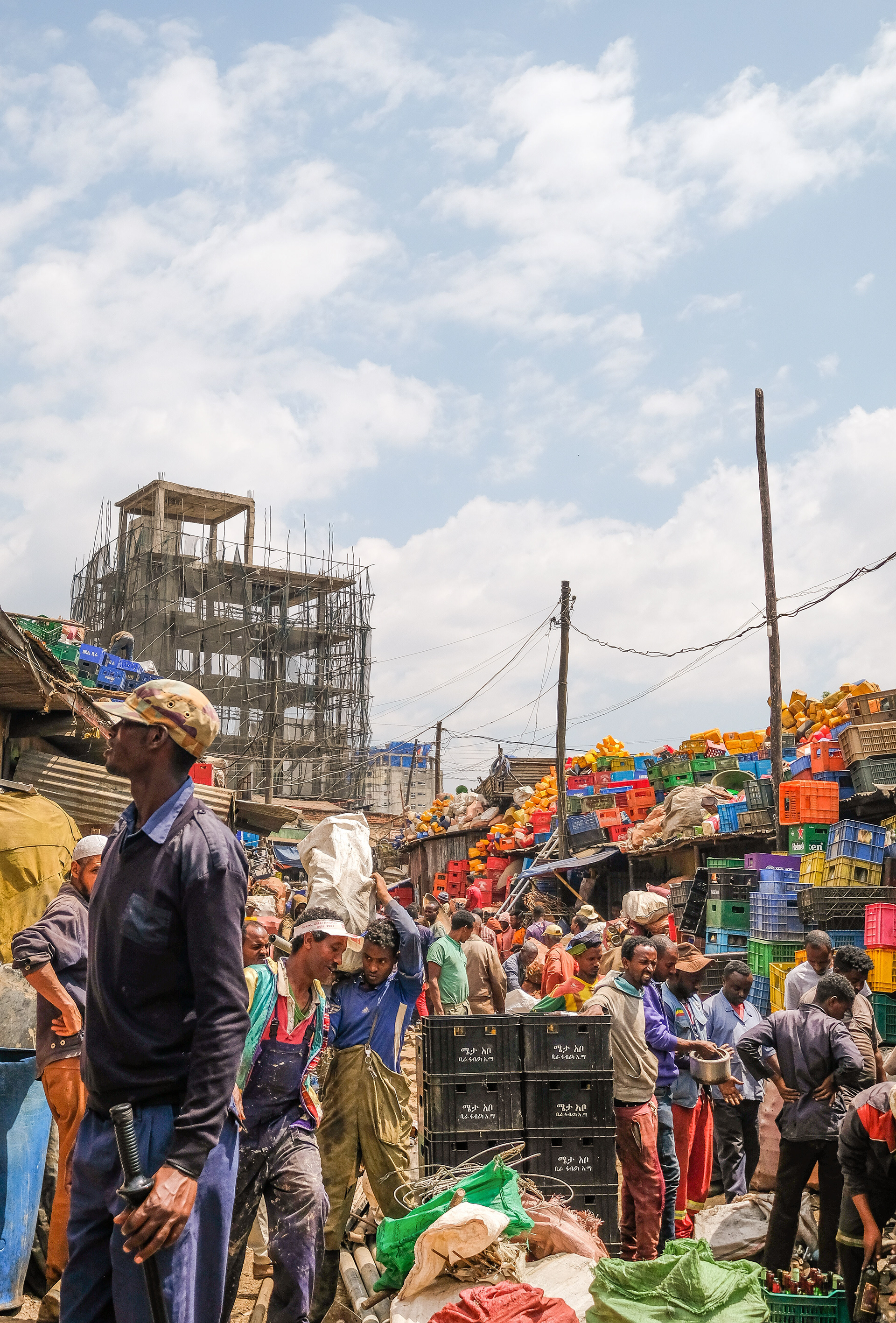
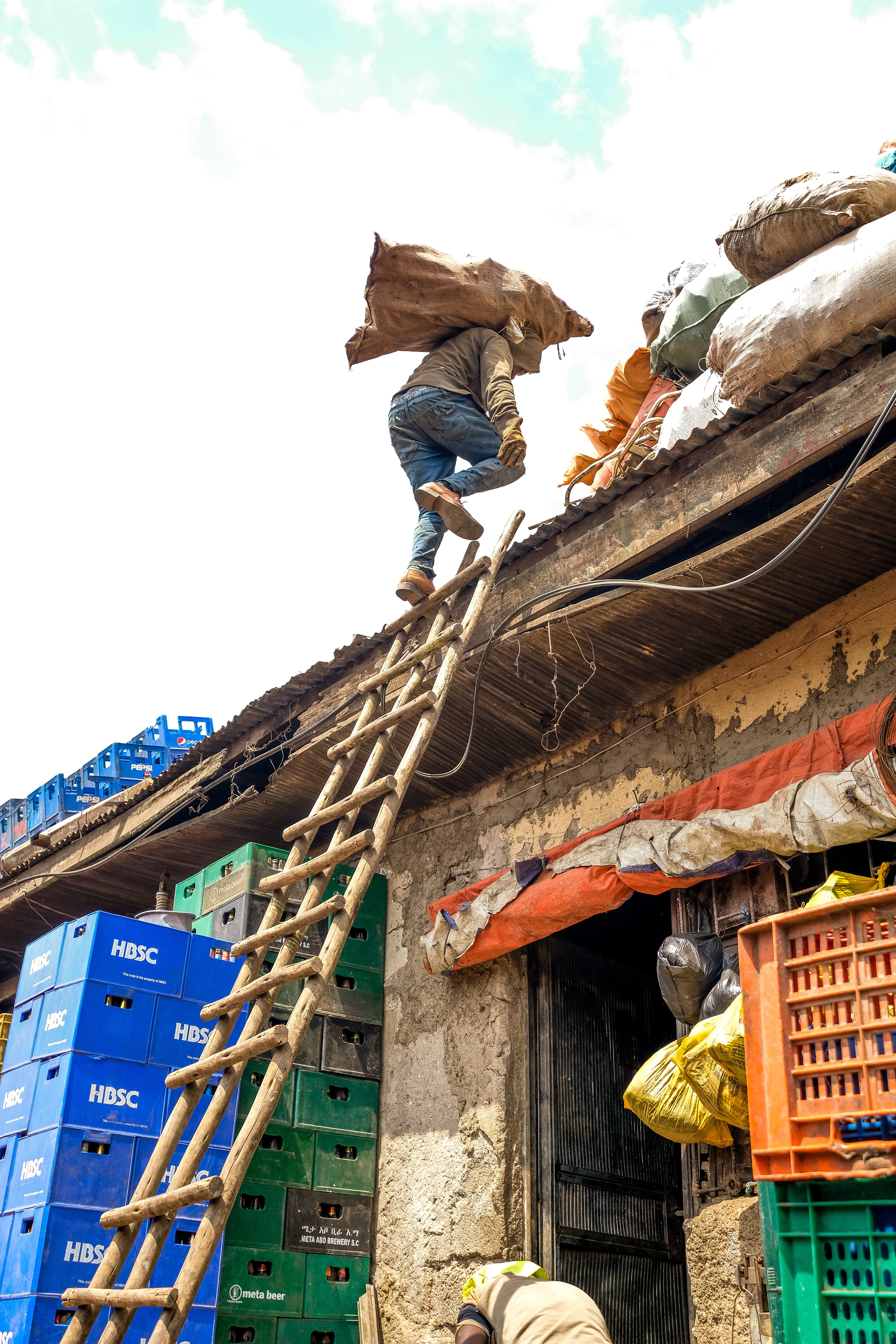
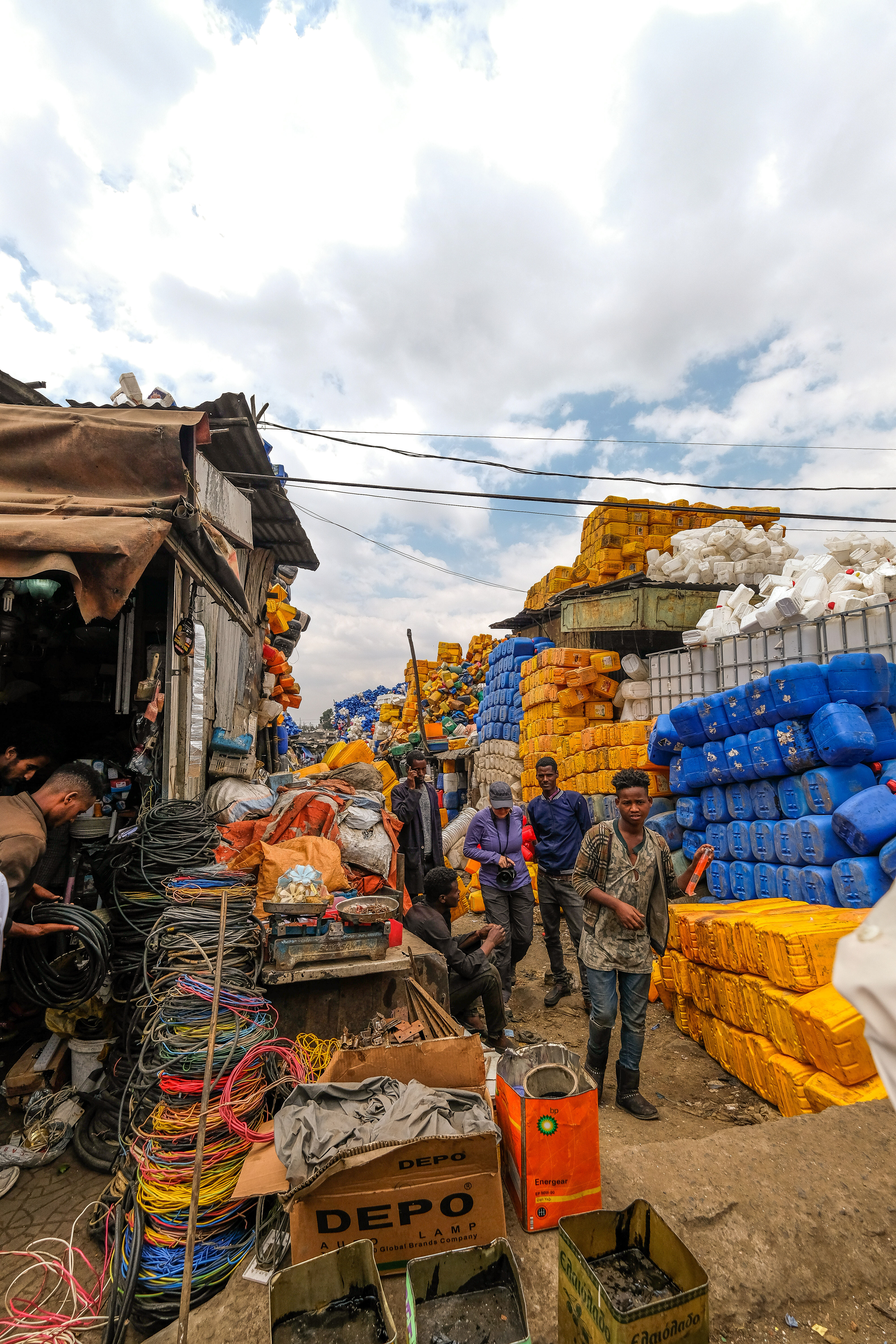


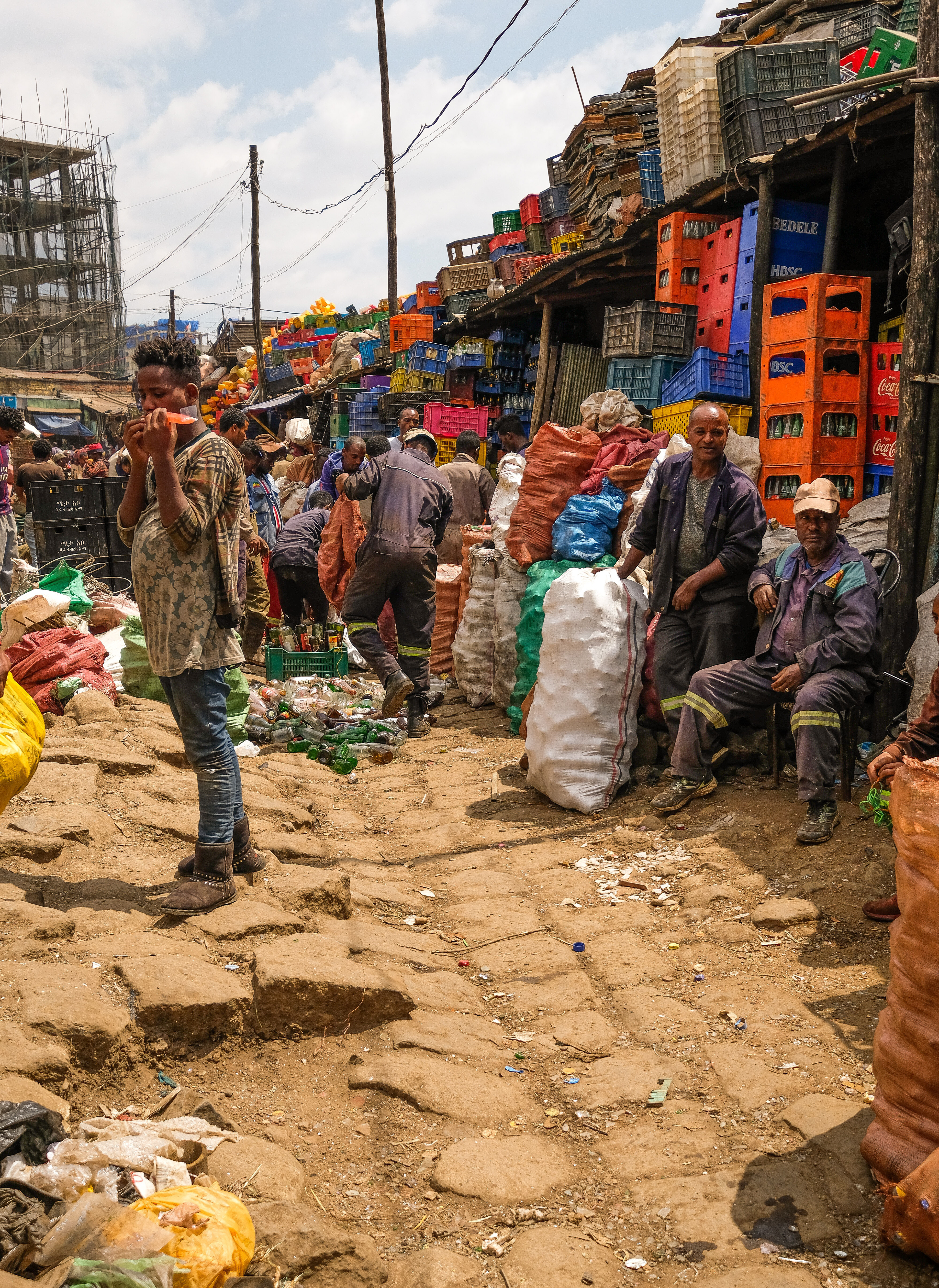
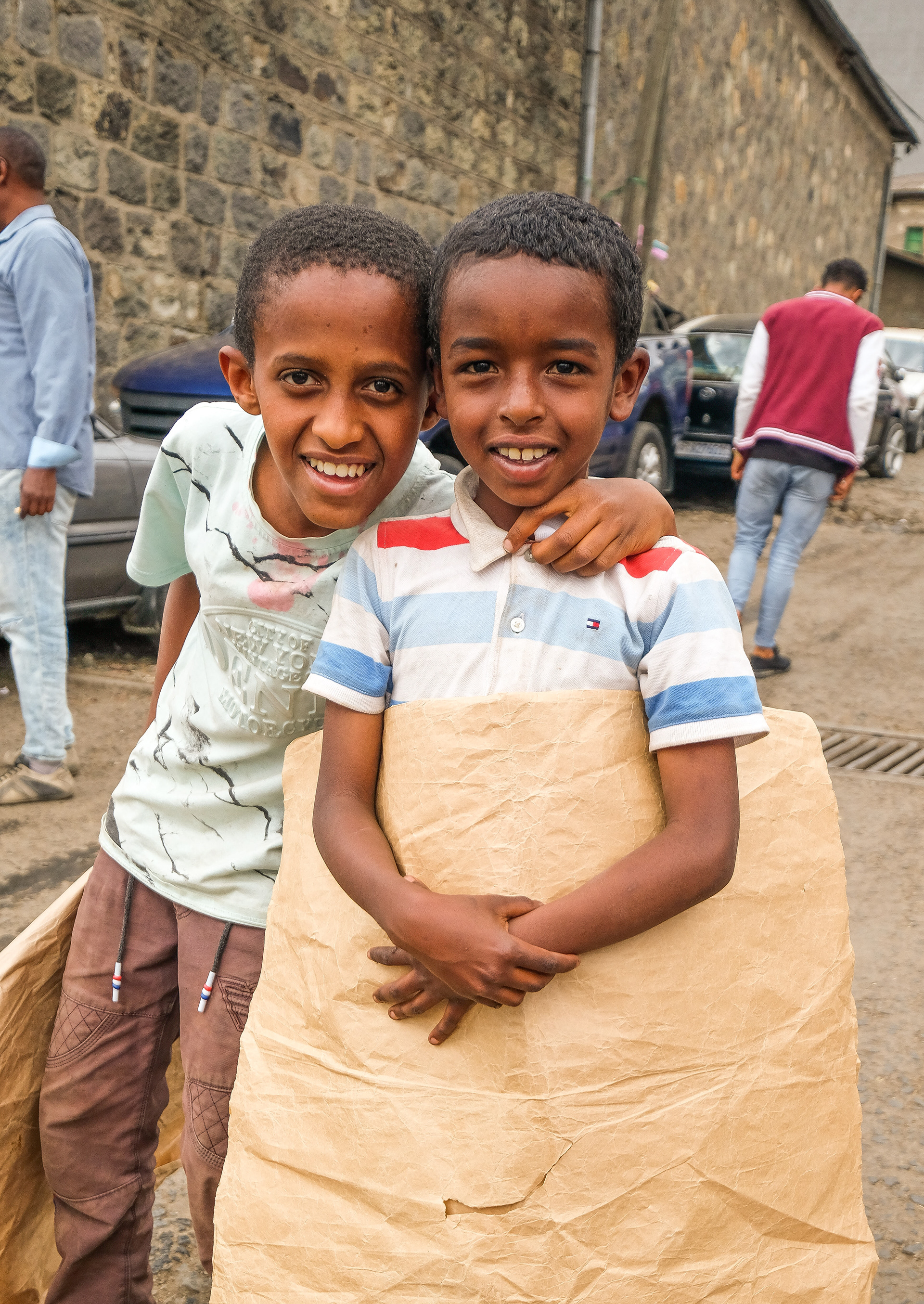
Merkato Market, Addis Ababa, Ethiopia
An everyday source of groceries and household items, the Merkato Market was controlled chaos. Rushes of men, women and livestock squeeze through the narrow pathways, most of them with heavy luggage on their heads or backs. A donkey with a wide load of grains pushes me over into a man sitting at his booth. He helps me up, a non-verbal thank you exchanged. As we wander through the market we were fish in a fishbowl, a spectacle one might say. The people here were just as curious about us and we were of them. An encounter with a woman selling grains, that i believe was sorghum, lightened our stressful atmosphere. She shook our hands with her smile glowing. We asked to take her photo, she blissfully agreed. We walked with about four armed guards who led us through the market diligently, allowing us to see the different sections and organization. There was a textile section, a hardware section, a veggie section, grains, household items, cooking materials, and the recycling section, which was the largest of them all. They have mounds and mounds of old plastic bottles and containers by which they scrub clean and resell to their community. We also witnessed many groups of people building stoves out of old tin cans in a stacked manner. So once you have your fire lit, you simply put the stove on top and the heat goes through each section of the stove (some of them went about six units high), making it easy to cook multiple things at once. The vendors here no longer rely on regular jobs, they are their own boss, some might consider them entrepreneurs. With little “regular” jobs in the city, your options are slim when it comes to making money. Many jobs revolve around hospitality, tourism, and the most common being the markets, hence the saturation of vendors Monday through Saturday. We visited on a Friday, busy day, which contributed to our experience of the true turmoil of the market.
Through The Omo Valley, Southwest Region of Ethiopia
Tribal Lands
The Hamar Indigenous Group:
Bull Jumping Ceremony Video: The bull jumping ceremony, one of which marks a man's right of passage and ability to marry his picking of a woman (if executed well). This ceremony has many different aspects that define the unique culture of the Hamar’s. It begins with the women relatives in the man’s family gathering together and performing. They paced back and forth in their villages courtyard, jingling bells, blowing horns, and chanting ballads expressing their love and appreciation for their cousin, brother or son. This event usually takes place when the male is around the age of sixteen, but can also happen later in the man’s life (like the one we witnessed).The ceremony we watched was for a man in his late twenties. (His family could not afford to put on the ceremony when he was younger.) As the relatives did their dancing and chanting, other village members sat around drinking coffee and alcohol. The women wear large anklets and bells around their legs to curate this lovely beat that is created when they jump up and down. Along with blowing horns made out of goat horns. Their costume is cowhide embroidered with detailed bead work, as well as sewn ruffles on the bottom of their skirts.
After this portion was completed, everyone started running to a different part of their village to watch the women show their love and commitment; by getting whipped. It seems very very taboo that in order to show commitment the women must get whipped, but in this culture it is tradition and is highly regarded by the families. The women want to get whipped. It shows the man’s family that she would get whipped for him. If the man doesn’t whip the woman she will mock him by jumping in front of him, hitting him, and blowing the horn in his face (which is a big insult) if he can no longer handle the mocking he will finally whip her ; the women who don’t get whipped cry because to them, they have just been rejected by the guy. They harvest long thin sticks from their local trees and pick the ones they think will give the best whip and leave the best scar on their backs. You can see throughout the video all the scars they have endured over the years.
The group migrated back to the courtyard where they performed a good luck ceremony on the bull jumper. Where they surrounded the man and rubbed a yogurt on him with a fertility stick (a stick many of the men carry, resembling a phallic symbol). This is done by the elders of his family. During this intimate ceremony an ignorant tourist nudged through the tight knit circle around the coming of age man. This tourist pushed through the elders and stuck his camera in the center of their ceremony, one of the largest forms of disrespect, and a big reason tourists are often seen as ignorant and selfish (which is often times not wrong). But, back to the ceremony, after they blessed the jumper with good luck it was time to jump. We migrated to a big field greeted with loud horns and chanting and a few dozen bulls running around. The women handled herding the bulls. Their bodies one in one with the large bulls. Not a drop of fear ran through these women's veins. Once in a general location, the men began lining the bulls up. Making sure they chose a good starting bull for the jumper. A very important process in the jumping ceremony is picking out the correct starting bull which is usually a smaller calf. Then after about ten or fifteen minutes of herding, it was time for the jump. Everyone gathered a little closer to the line of bulls, all eyes were on the jumper. I saw only flashes. He was up, jumped about four or five bulls, then down. He had to jump back. A large leap followed by nimble steps across the bony uneven back of the bull, got him across to the other side. Cheering, horns and clapping. The ceremony was over, the sun had set, the deed was done, the jumper was officially considered a more well respected man.
Being this group is closest off the highway and local lodges, you can see in the video it is a hotspot for tourists. The Hamer Group has suffered from heavy western influence, it can be blatantly seen just in their clothing. They have become accustomed to constant foreigners budding into their land, and as this industry grows rapidly their culture will never be the same. Each year they will fall more and more distant from their heritage, and also risking getting moved out of their land due to industrialization.

